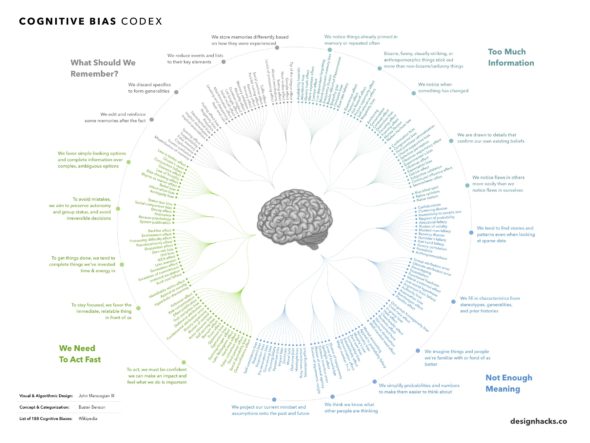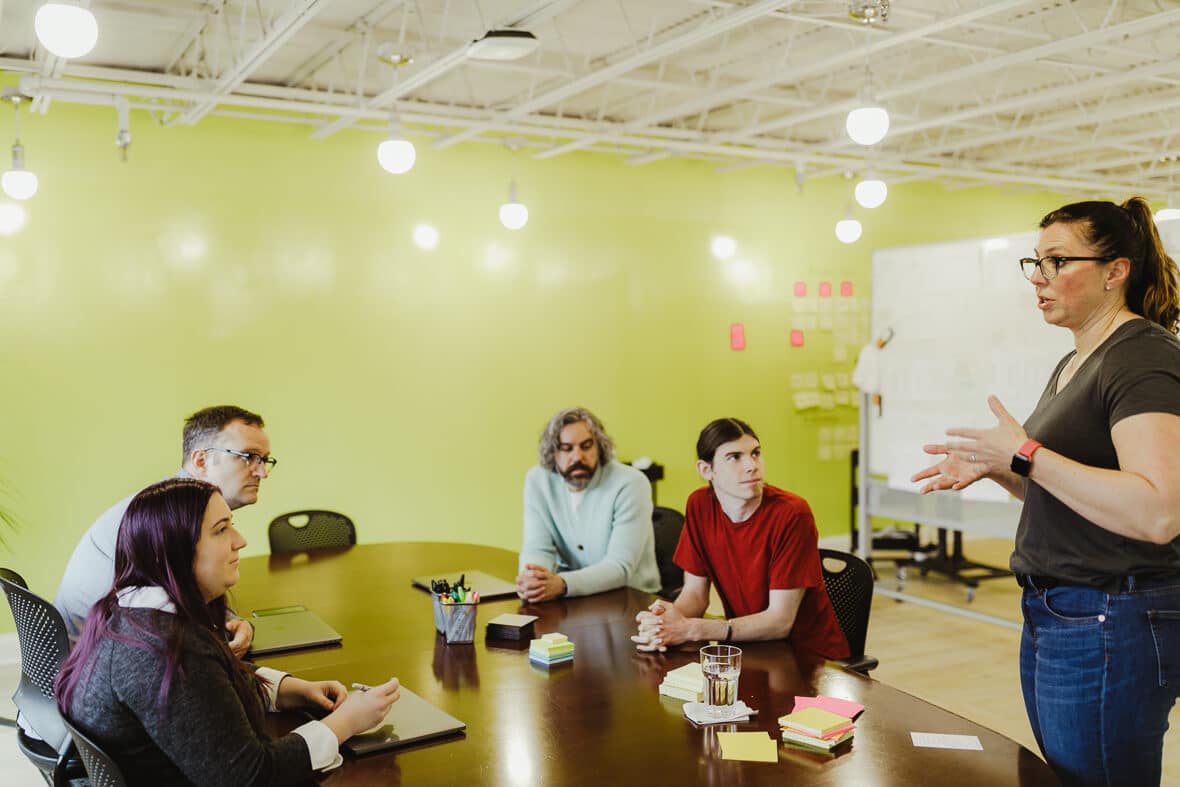Most people think that they tend to make rational, logical decisions. However, often, we don’t! I’d like to provide you with an overview of cognitive bias and how a well-known bias, loss aversion, can affect the consultant-client relationship.
What is Cognitive Bias?
Cognitive bias is a term used to describe “systematic deviation from rationality in judgment or decision-making” (Blanco). In more simple terms, cognitive bias could be described as a series of shortcuts, assumptions, and/or incorrect conclusions when people make judgments or decisions. These may come about due to social pressure, emotional or moral influences, or just having too much information for our brains to process. This psychological phenomenon has been documented since the 1970s.

(Infographic by Design Hacks)
Cognitive bias can be quite useful in quick decision-making or fight/flight situations. The problems arise when these biases make their way into decisions that are important or not fight/flight.
What is Loss Aversion?
Imagine that you are walking down the street and find a cool keychain. You probably feel pretty good.
Imagine that a few blocks later a friend walks up and takes the keychain out of your hand. You probably feel pretty upset! That was your keychain!
Your friend then offers you an identical keychain out of their backpack. At this point, you probably feel a bit unnerved that your friend had an identical keychain, and you probably feel that it is still unfair! An identical keychain isn’t going to make up for them taking yours!
Rationally, we should feel the same level of emotion while finding a keychain, having the keychain taken, and being offered an identical keychain. However, humans get emotionally attached to things that are their own and feel a large emotional loss when they are taken away. According to the research, it would actually take two keychains from your friend for you to feel, emotionally, that the loss of your keychain was recouped.
Loss Aversion & Consulting
As a designer and consultant, I see this cognitive bias in action frequently when I have to modify or rework features that were in a previous system, or when I have an alternative solution to an idea that a client suggested. In this case, I find there are a few ways to help prevent clients from feeling like they are losing features or that their ideas are being thrown out.
Reframe the loss
One way is to reframe the loss. Designers don’t rework features in a willy-nilly fashion. Rather, we redesign or alter features that do not align with the users’ actual workflow, are not technically feasible, or are preventing access to a greater goal.
If I know that I am reworking an existing feature, I’ll make sure to describe the bigger picture when talking with clients. I explain all the things that they will gain by this change (e.g. data integrity, a more flexible system, a system that will be easier to maintain) in the long term, even if they are losing a feature in the short term.
Balance losses with gains
Another thing consultants can do when replacing an existing feature or client idea is to ensure that they can offer at least two positive gains for every loss. This will make the client feel, emotionally, that the loss has been balanced out. Do note, this only works if the client values the gains equal to the loss! Be sure to think from the client’s perspective when doing this.
Loss Aversion for Designers & Developers
As biases affect everyone, I try to keep this bias in mind when clients, developers, and other designers give me feedback on my own ideas! Emotionally, I might feel like my idea is twice as good as someone else’s, so I make sure to take a step back.
I find it helps to say, “Let me think about this and get back to you.” This gives me time to compare the ideas without the emotions of the moment and bias clouding my judgment. It can also help to ask, “Could you explain this idea to me in more detail? What are the benefits? What were you thinking about when you came up with this idea?” Often, the person is able to articulate a number of positives, or they reframe the problem in a way I hadn’t thought of yet.
As a developer, you may also see this bias at play when reviewing a pull request or when pairing. Remember, just because an idea or solution isn’t yours doesn’t inherently make it less excellent. Take a moment to reflect—is your solution actually better, or are you simply more emotionally attached to it?
As a developer, you should also keep this bias in mind when ramping onto a new project with an existing codebase. The solutions in place might not seem as good as yours, as you look in with fresh eyes. Remember, the devs making decisions before you might have had different constraints, or they may not have known all the information that you have coming into the projects months (or years) later.
Cognitive biases are an unavoidable part of being human. However, if we keep them in mind while making decisions and presenting new ideas, we can open the door to new and better ideas.

